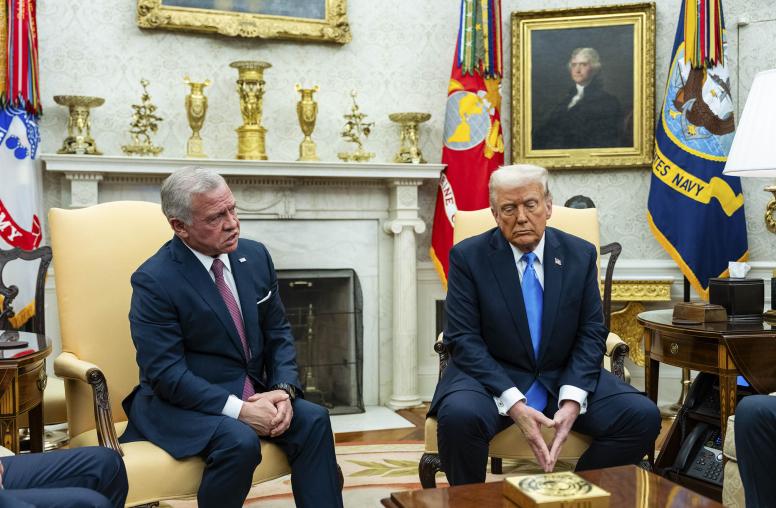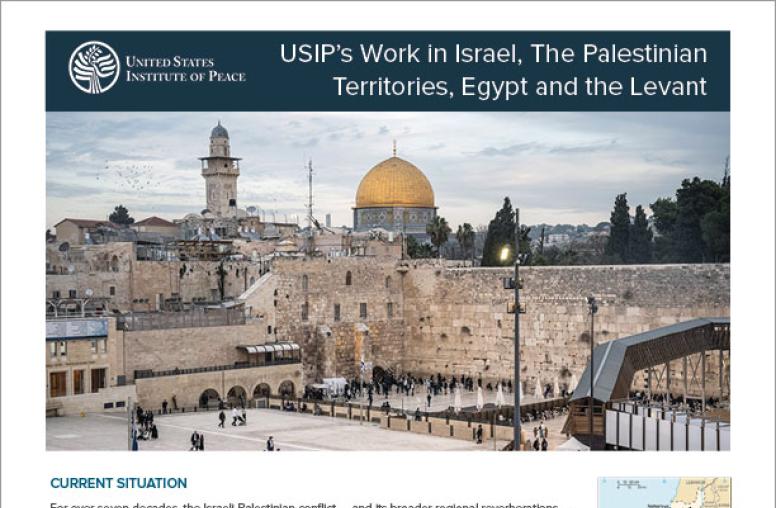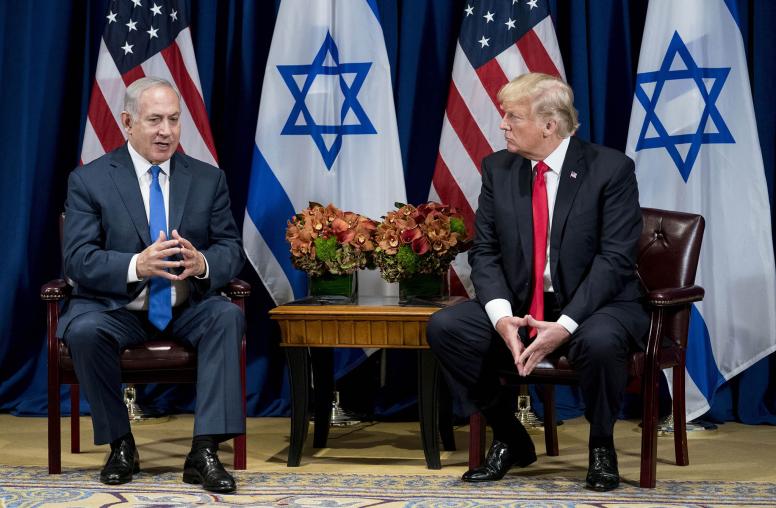Trump Highlights Religion in Israeli-Palestinian Conflict
Bringing Religious Communities into Peace Process Could Open New Path
With the Israeli-Palestinian conflict a centerpiece of his first official trip abroad, President Donald Trump is staking out some delicate terrain. Unlike his predecessors, Trump has taken the risky step of highlighting the importance of religion to his policy goals with stops in Saudi Arabia, home to Islam’s two holiest sites, followed by Jerusalem, Bethlehem and the Vatican. While it’s an approach strewn with landmines, a serious and nuanced effort involving religious communities could open new opportunities in the Israeli-Palestinian peace process.

Past diplomacy over the conflict has generally left for the future the most religiously sensitive issues—notably Jerusalem—to focus on more secular matters such as security and national recognition. The tortured history of the Temple Mount/Al Aqsa compound—holy to both Jews and Muslims—is alone enough to illustrate how religious flashpoints and rallying cries can take hold. Conflict at the Jerusalem landmark helped spark both the second intifada and the round of more sporadic deadly violence that broke out in the fall of 2015.
Against a regional backdrop of violent groups claiming a religious mantle, the more that religion becomes a focal point of the Israeli-Palestinian conflict, the greater the opportunity for cynical exploitation by extremists.
Certainly, this argues for proceeding with forethought and caution around religious matters. But the contested geography is known as “The Holy Land” for a reason. Efforts to resolve the conflict without acknowledging the deep religious attachments of its various stakeholders are destined to fail.
In recent years, theologically motivated Israeli and Palestinian constituencies have gained influence. These groups felt alienated by the peace process that emerged in the 1990s and have withheld political support for the diplomatic track, resenting its perceived favor for secular interests, approaches and ideologies. No one should underestimate their ability to affect the trajectory of the conflict. At its most corrosive, this sentiment has motivated violent, spoiler behavior.
Key religious leaders began groundwork to counteract this issue almost 20 years ago, at the height of the second intifada. In January 2002, Palestinian Christian, Jewish and Muslim leaders met in Alexandria, Egypt and issued a joint declaration to give a religious imprimatur to interfaith work to end the bloodshed and pursue a just and lasting peace. That initiative and similar ones that came later are important, but their symbolic power must be leveraged to reach a wider audience and win sustained engagement from all quarters.
The Reach of Peace Initiatives
Since the Alexandria summit, the U.S. Institute of Peace has partnered with a variety of faith leaders, religious community members and organizations to expand the work begun in the Egyptian city. The results of those efforts suggest that broadening the reach of peace-oriented initiatives to include religion can encourage the participation of faith communities and spur creative problem solving.
A project launched by the Jerusalem office of Search for Common Ground, a civil society group, serves as an example. It provides religious awareness training, and facilitated cooperation between police and Jewish, Muslim, and Christian religious leaders to reduce interreligious tensions around a shared Jerusalem holy site. The program helped to reduce tension and violence at the site, according to a police commander in charge of its security.
Likewise, the organization Siach Shalom (Talking Peace) has long invested in facilitating sustained dialogue across ideological lines and degrees of religiosity within Israel. The process has led to an unprecedented readiness among certain community leaders to engage their own constituencies more openly on the question of peace. They have even started a process of problem-solving dialogues with ideological opponents on key flashpoints in the conflict.
Embracing the conflict’s religious dimension with a serious, thoughtful dialogue within and across faiths could open a fresh and constructive path. President Trump’s envoy for international negotiations, Jason Greenblatt, made a promising start in this direction during his March 2017 trip to Israel and the West Bank. He met with senior Jewish, Muslim and Christian clerics.
President Trump reinforced the notion in his speech in Saudi Arabia when he said that fostering tolerance and respect between the three Abrahamic faiths could enable peace between Israelis and Palestinians. Organizations and individuals on the ground already exist to carry out such work at a deep community level.
Should President Trump succeed in reviving a diplomatic process, the U.S. and the international community could invest further in this sector, and harness the religious symbolism of this trip for productive engagement.




